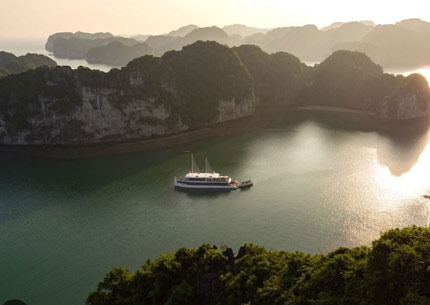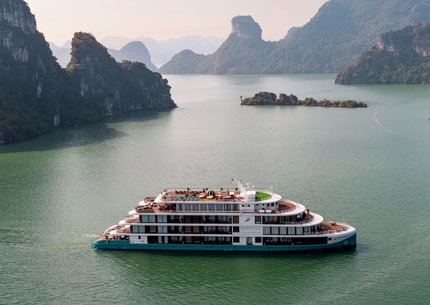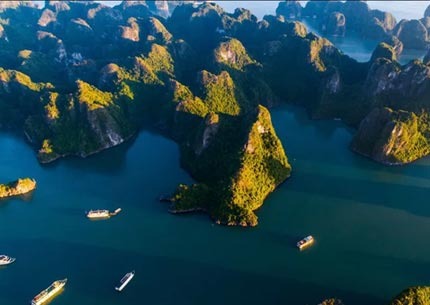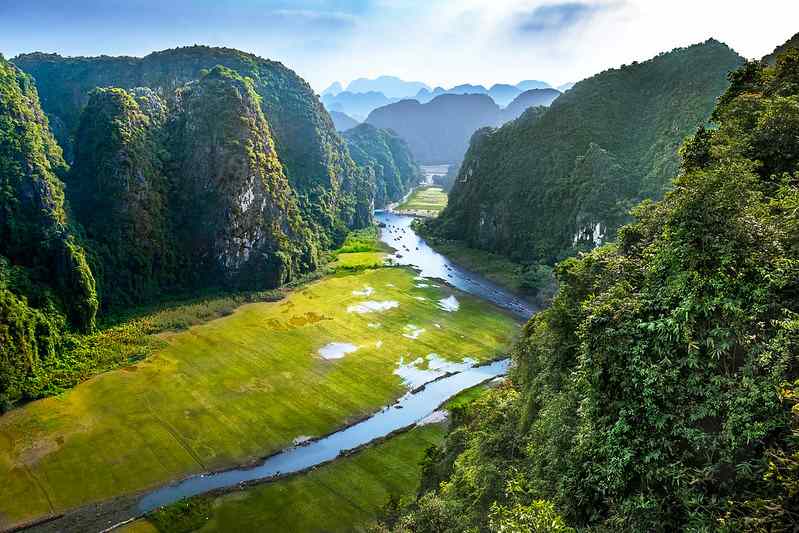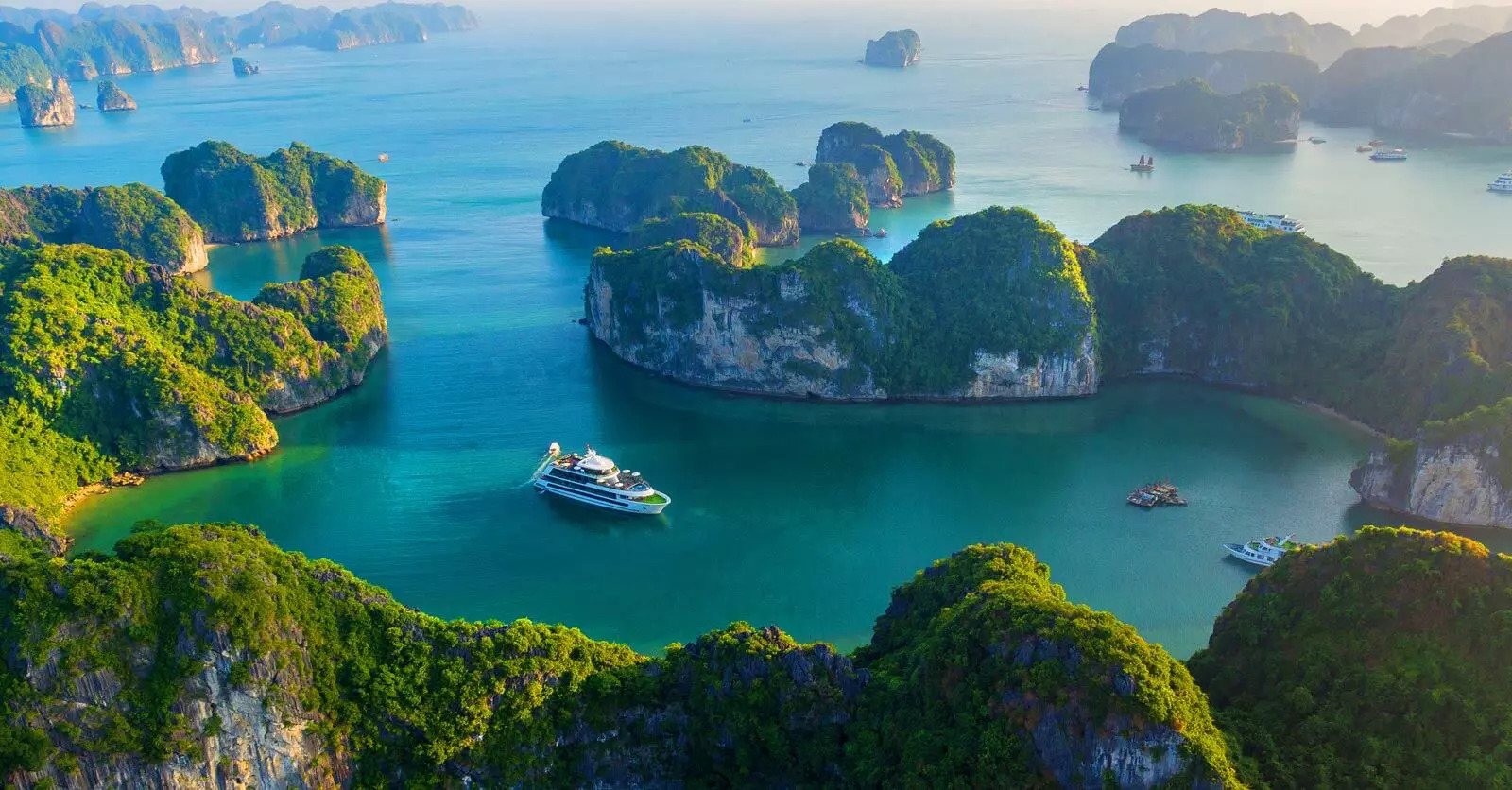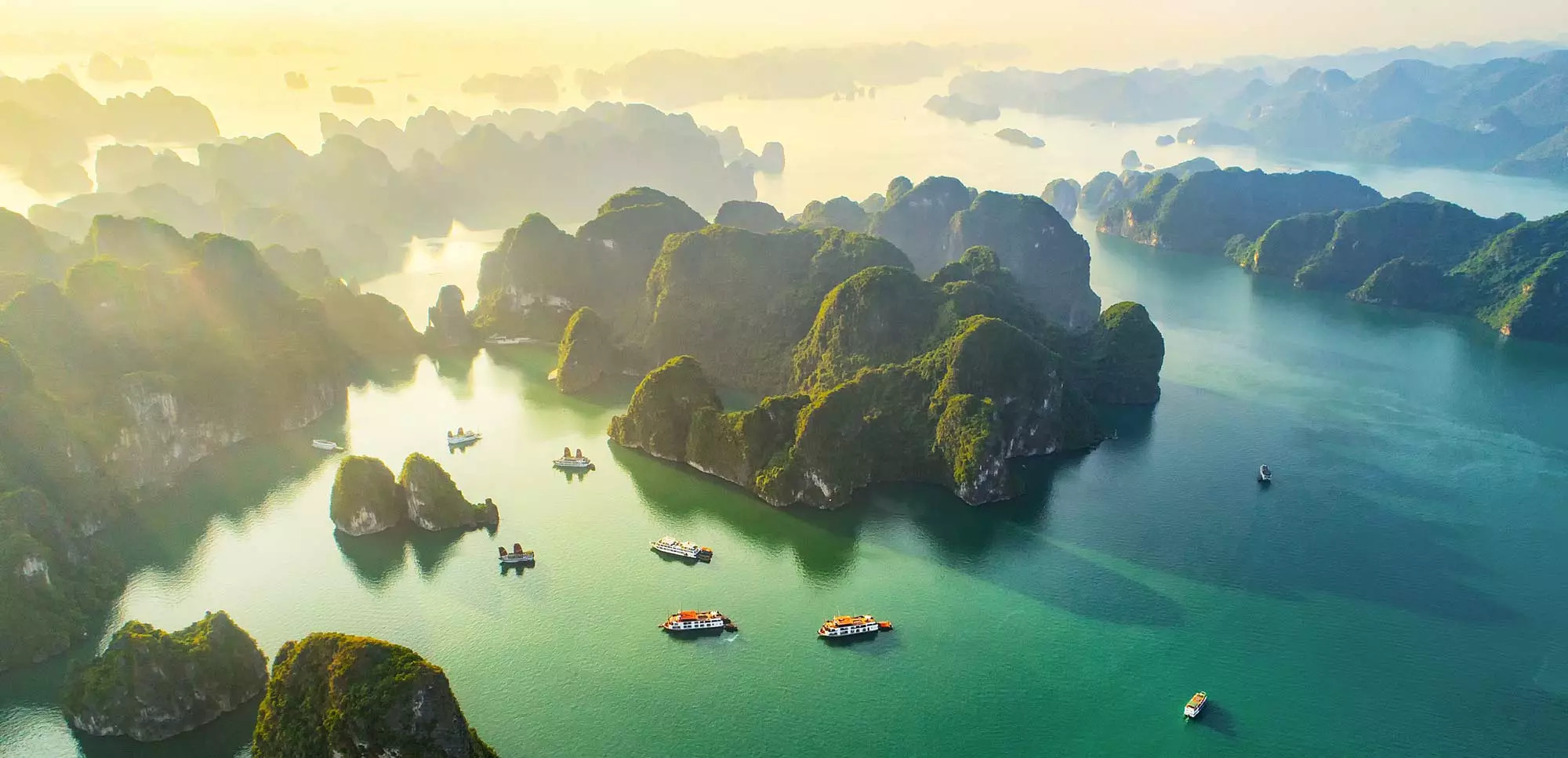Bai Tu Long Bay
Discover tranquility in Bai Tu Long Bay in 2025 with our exclusive cruise for just $120! Enjoy must-see destinations like Vung Vieng Fishing Village, Thien Canh Son Cave, and Cap La Island. Book now with free cancellation and pay later, plus enjoy the flexibility to change your reservation. Don’t miss your chance to explore beautiful beaches and serene landscapes—secure your adventure today
Lan Ha Bay Cruise & Bai Tu Long Bay Luxury Cruises – Best Price, Unforgettable Journeys
Welcome to Vietnam Marvel Travel, your trusted partner for Lan Ha Bay Cruises and Bai Tu Long Bay Cruises, along with Ha Long Bay’s top-rated itineraries.
We bring you 5-star and 6-star luxury cruises that combine world-class service, stunning UNESCO World Heritage scenery, and authentic Vietnamese experiences.
Whether you’re planning a romantic honeymoon, a family holiday, or a private charter for special occasions, we guarantee the best price, exclusive offers, and hassle-free booking.
Why Choose Us for Your Lan Ha Bay or Bai Tu Long Bay Cruise?
-
Best Price Guarantee – Exclusive deals directly with cruise operators
-
Top-Rated Luxury Ships – Modern facilities, spacious cabins, and private balconies
-
Flexible Booking – Free cancellation, secure payment, instant confirmation
-
Expert Local Team – English-speaking guides and personalized service
-
Unique Itineraries – Visit hidden lagoons, secluded beaches, and authentic fishing villages
Lan Ha Bay Cruise – The Peaceful Gem of Ha Long Region
Located south of Ha Long Bay, Lan Ha Bay offers the same breathtaking limestone karsts and emerald waters but with fewer crowds.
With over 300 islands, hidden beaches, and pristine lagoons, it’s perfect for nature lovers, photographers, and travelers seeking tranquility.
Popular Lan Ha Bay Cruise Packages
-
Lan Ha Bay 2 Day Cruise – Short yet scenic escape with kayaking & cave exploration
-
Lan Ha Bay 3 Day Cruise – Includes Cat Ba Island cycling, Dark & Bright Cave kayaking
-
Lan Ha Bay Luxury Honeymoon Cruise – Romantic setup with private dining & sunset views
-
Lan Ha Bay Private Charter – Customized for families, VIPs, and corporate events
Lan Ha Bay Highlights:
-
Kayaking in Dark & Bright Cave
-
Cycling in Viet Hai Village
-
Swimming in secluded lagoons
-
Cooking classes with Vietnamese chefs
-
Tai Chi sunrise sessions
-
Squid fishing under the stars
Lan Ha Bay cruise, Lan Ha Bay luxury cruise, Lan Ha Bay overnight cruise, Lan Ha Bay 2 day 1 night, Lan Ha Bay 3 day 2 night, Lan Ha Bay honeymoon cruise, Cat Ba Lan Ha Bay cruise, Lan Ha Bay kayaking, Lan Ha Bay tour price.
Bai Tu Long Bay Cruise – Serenity & Untouched Beauty
For travelers seeking a more off-the-beaten-path experience, Bai Tu Long Bay is the perfect choice.
With crystal-clear waters, tranquil beaches, and charming fishing villages, it’s often called the hidden paradise of Northern Vietnam.
Popular Bai Tu Long Bay Cruise Packages
-
Bai Tu Long Bay 2 Day Cruise – Peaceful getaway with cave visits & kayaking
-
Bai Tu Long Bay 3 Day Cruise – More time to explore remote islands & fishing villages
-
Luxury Bai Tu Long Bay Cruise – 5★ and 6★ ships with world-class service
Bai Tu Long Bay Highlights:
-
Visit Thien Canh Son Cave
-
Explore floating fishing villages
-
Kayak in untouched lagoons
-
Relax on deserted beaches
-
Enjoy sunset cocktails on the sundeck
Bai Tu Long Bay cruise, Bai Tu Long Bay overnight cruise, Bai Tu Long Bay luxury cruise, Bai Tu Long Bay 2 day cruise, Bai Tu Long Bay 3 day cruise, Bai Tu Long Bay kayaking, Bai Tu Long Bay itinerary, Bai Tu Long Bay tour price.
Activities Across All Cruises
-
Kayaking & Swimming – Explore caves, lagoons, and beaches
-
Cultural Encounters – Floating fishing villages & Cat Ba Island
-
Cooking Classes – Learn Vietnamese dishes from onboard chefs
-
Tai Chi & Wellness – Start your day with peaceful sundeck sessions
-
Cave Exploration – Sung Sot Cave, Dark & Bright Cave, Thien Canh Son Cave
-
Beach Time – Sunbathe on pristine sands
-
Night Fun – Squid fishing & stargazing
Why Travelers Choose Vietnam Marvel Travel
-
Thousands of 5★ reviews on TripAdvisor & Google
-
Transparent pricing with no hidden fees
-
Variety of ships: boutique vessels, modern luxury cruisers, private yachts
-
Local expertise with personalized service
Bai Tu Long Bay 2025 Travel Guide: Weather, Reviews, Packing List, Foods & Best Time to Visit
Bai Tu Long Bay, often dubbed the tranquil twin of the famous Ha Long Bay, offers an unspoiled seascape of limestone karsts, hidden caves, and serene waters. Located in the northeastern part of Vietnam, it is a dream destination for travelers who crave breathtaking natural beauty, fewer crowds, and authentic cultural experiences.
In this comprehensive 2025 guide, we'll unpack everything you need to know about Bai Tu Long Bay – from seasonal weather forecasts and trusted traveler reviews to packing suggestions, food recommendations, and the perfect time to visit.
1. What Makes Bai Tu Long Bay Special?
Unlike its bustling neighbor Ha Long Bay, Bai Tu Long Bay remains relatively untouched. It's part of the UNESCO-listed Ha Long Bay complex but displays a more serene atmosphere. Its topography features over 100 islands and islets, including rock formations more than 20 million years old.
Key Attractions:
- Thien Canh Son Cave: A hidden gem with natural stalactites and historical carvings spanning 220 square meters of explorable space.
- Vung Vieng Fishing Village: Immerse yourself in authentic floating village life where approximately 50 families maintain traditional fishing practices.
- Ban Chan Beach: A secluded stretch of white sand perfect for swimming and kayaking, extending 700 meters along crystal-clear waters.
Ideal for:
- Couples seeking romantic getaways
- Families looking for educational trips
- Eco-tourists and nature lovers
- Photography enthusiasts
For travelers seeking an immersive experience, 2-day Bai Tu Long Bay cruises offer the perfect balance of exploration and relaxation, with carefully crafted itineraries that showcase the bay's most stunning features.
2. Seasonal Weather in Bai Tu Long Bay
Understanding the weather in Bai Tu Long Bay is crucial for planning your perfect trip. Here's a season-by-season breakdown for 2025:
Spring (March – May)
Temperature Range: 18°C–27°C (64°F-81°F)
Humidity: 75-85%
Rainfall: 70-150mm per month
Sunshine Hours: 5-7 hours daily
Water Temperature: 22-25°C (72-77°F)
Spring delivers mild temperatures and low rainfall, making it a fantastic time for cruises and island hopping. March brings occasional mists that create ethereal scenes perfect for photography, while April and May offer increasingly clearer skies.
Summer (June – August)
Temperature Range: 28°C–35°C (82°F-95°F)
Humidity: 80-90%
Rainfall: 200-320mm per month
Sunshine Hours: 6-8 hours daily
Water Temperature: 26-29°C (79-84°F)
Summer brings hot weather with higher chances of rain and occasional typhoons. Morning visibility is good, but afternoon cruises may be impacted by sudden showers. Water activities are excellent due to warmer sea temperatures, but be prepared for occasional cruise cancellations during severe weather alerts.
Autumn (September – November)
Temperature Range: 20°C–27°C (68°F-81°F)
Humidity: 70-80%
Rainfall: 90-150mm per month
Sunshine Hours: 5-7 hours daily
Water Temperature: 24-27°C (75-81°F)
The best time to visit! Autumn offers comfortable weather, calm seas, and spectacular sunsets. October is particularly magical with crystal-clear visibility extending up to 15km on good days, allowing for breathtaking panoramic views of the karst landscape.
Winter (December – February)
Temperature Range: 15°C–20°C (59°F-68°F)
Humidity: 65-75%
Rainfall: 20-60mm per month
Sunshine Hours: 3-5 hours daily
Water Temperature: 19-22°C (66-72°F)
Winter brings cooler temperatures with drier air. Beautiful scenery abounds, though it's not ideal for swimming. December offers unique photo opportunities with atmospheric mists, while January and February may bring occasional drizzle lasting 2-3 days.
Hottest Month: July – up to 35°C (95°F)
Coldest Month: January – as low as 14°C (57°F)
Rainiest Month: August – average rainfall of 320mm
Clearest Visibility: October – up to 15km on clear days
3. Trusted Traveler Reviews: What People Are Saying
Don't just take our word for it—here are some reviews from reputable platforms and cruise guests:
🌟 Cruiser Feedback from TripAdvisor:
"After visiting both Ha Long Bay and Bai Tu Long Bay, it's clear that Bai Tu Long is for true nature lovers. Less traffic, more serenity... and the bio-luminescent plankton at night? Magical. We counted only 7 other boats during our entire 2-day cruise, compared to dozens in Ha Long Bay." - LukeAndEmma_2024, visited March 2024
🌟 Google Review from 2024:
"The service on our 3-day cruise was flawless. Our cabin (28 sqm) overlooked the karsts directly, and meals were just as photogenic as they were delicious. The crew remembered our preferences from day one, and the guide's knowledge of local ecology was impressive. Worth every penny for the exclusivity factor alone." - Melissa R., visited August 2024
🌟 Booking.com Review:
"If you like sustainable travel, this bay is your place. Local operators use eco-friendly practices, and the itinerary offered insightful cultural stops. Our family of four enjoyed the 89% plastic-free approach on our cruise, and the kids loved participating in the beach cleanup activity. The electric-powered tender boats were a nice touch too." - Kaitlyn J., visited September 2024
Average Rating: 4.8/5 across major review sites with over 3,200 verified reviews
For those seeking an extended experience, 3-day Bai Tu Long Bay cruises consistently receive the highest ratings (4.9/5) for their comprehensive itineraries and unhurried pace that allows guests to truly absorb the bay's tranquil beauty.
4. Packing List for Bai Tu Long Bay (2025 Edition)
Planning for a luxurious but nature-connected trip like this means packing smartly. Here's your curated list:
Essentials:
Light, breathable clothing: Pack 3-4 sets of linen & cotton for daytime; 2 long-sleeve options for evenings
Swimwear: 2 sets recommended for multi-day cruises
Sun protection: Wide-brimmed hat (minimum 7cm brim), polarized sunglasses, and reef-safe sunscreen (minimum SPF 50)
Waterproof bag: 10-15L capacity ideal for kayaking and small boat trips
Insect repellent: DEET-free options with 20% picaridin (especially vital from May to September)
Rain gear: Compact travel umbrella or packable raincoat during summer months (June-August)
Photography equipment: Camera with extra batteries or smartphone with minimum 64GB storage
Seasickness remedies: Ginger tablets, acupressure wristbands, or prescribed medication
Reusable water bottle: 750ml-1L capacity – many cruise operators now avoid single-use plastics
Optional but Recommended:
- Travel journal: Document your journey through one of Vietnam's most pristine seascapes
- Binoculars: 8x42 magnification ideal for spotting the 40+ bird species and rare marine life
- Power bank: Minimum 10,000mAh capacity for day-long excursions
- Travel adapter: Vietnam uses types A, C, and D plugs (220V)
- Light footwear: Water shoes for cave explorations and rocky shores
- Evening attire: One smart-casual outfit for gala dinners on premium cruises
- Dry bag: 5L capacity for protecting electronics during kayaking adventures
Pro Tip: Pack in layers for December-February visits when morning temperatures can be 10°C cooler than afternoon highs.
5. Must-Try Local Foods in Bai Tu Long Bay
Northern Vietnam is rich in seafood and traditional recipes that you definitely shouldn't miss. Here are some delicacies worth trying during your Bai Tu Long Bay cruise:
Signature Seafood Specialties
🥢 Grilled Squid Sausage (Cha Muc Ha Long): Made fresh from local squid caught daily by Vung Vieng village fishermen, this savory delight is most flavorful when served with sticky rice or bánh cuốn. The texture is uniquely firm yet tender, with a distinct smoky flavor enhanced by caramelized fish sauce.
🥢 Geoduck Clam (Tu Hai): A premium local mollusk weighing up to 500g each, served grilled with scallion oil or in traditional soup. This Quang Ninh specialty commands prices of 400,000-600,000 VND ($16-24) per kg due to its delicate flavor and limited availability.
🥢 Sea Snail in Lemongrass Chili Sauce: A spicy marine delicacy enjoyed mostly in floating seafood markets. The snails are simmered for exactly 12 minutes to achieve the perfect texture, then tossed in a sauce featuring 5 different chili varieties.
🥢 Seafood Hotpot (Lẩu Hải Sản): Popular on cooler nights onboard cruises. Includes tiger prawns, mud crabs, Venus clams, and locally caught grouper in a broth infused with 12 traditional Vietnamese herbs.
Regional Favorites
🥢 Gat Gu Cake: A sweet rice flour cake unique to Quang Ninh province, featuring layers of sticky rice and mung bean paste.
🥢 Banh Gat Gu: Rice dumplings filled with seasoned pork and wood ear mushrooms, served with a dipping sauce made from Bai Tu Long Bay sardines.
🥢 Van Don Oysters: Sustainably farmed in the clean waters near Quan Lan Island, these oysters are 30% larger than typical Pacific varieties.
Vegetarian Options
Most cruises offer vegetarian versions on request, including:
- Tofu spring rolls with 7-herb dipping sauce
- Stir-fried seasonal greens harvested from mainland organic farms
- Mushroom-based "seafood" hotpot featuring locally foraged varieties
- Ban Chan beach rice noodles with tempeh and fresh herbs
Tip: Always mention dietary restrictions upon booking your cruise to customize meals properly. Premium cruises can accommodate gluten-free, vegan, halal, and kosher requirements with 48 hours' notice.
6. Best Time to Visit Bai Tu Long Bay in 2025
While the bay is open year-round, the best time to visit Bai Tu Long Bay is between September and November. Here's why:
Prime Visiting Months: September-November
✔️ Weather: Dry air, moderate temperature (avg. 24°C/75°F)
✔️ Cruise Comfort: Calm seas with wave heights rarely exceeding 0.5m
✔️ Photography: Clear skies amplify the karst landscape with visibility up to 15km
✔️ Wildlife: Excellent conditions to spot 40+ native bird species, mountain goats, and marine creatures
✔️ Pricing: 15-20% lower than peak December rates
✔️ Crowds: Only 60% of the visitor numbers seen during Vietnamese holidays
Secondary Recommendation: March-April
✔️ Unique Atmosphere: Morning mists create dreamlike photo opportunities
✔️ Bloom Season: Wild orchids and endemic flora appear on limestone formations
✔️ Pleasant Temperatures: 20-25°C (68-77°F) ideal for outdoor activities
✔️ Water Clarity: Visibility reaches 8-10m for snorkeling enthusiasts
Avoid These Dates in 2025:
- Tet Holiday (January 29 - February 5, 2025): Domestic tourism surge increases prices by up to 40%
- National Day (September 2, 2025): Local holiday weekend creates brief crowding
- Christmas/New Year (December 23, 2025 - January 2, 2026): International peak season with premium pricing
Insider Tip: Book mid-week departures (Tuesday-Thursday) for the most tranquil experience – weekend departures can see up to 35% more cruise vessels in the bay.
7. Top Activities and Highlights You Shouldn't Miss
Bai Tu Long Bay offers diverse experiences beyond simple sightseeing. Here are the must-do activities for your 2025 visit:
⛵ Overnight Luxury Cruises
Choose between 1-day, 2-day, or 3-day itineraries aboard boutique ships such as Dragon Legend and Signature Cruise. Premium vessels feature:
- Private balcony cabins (22-45 sqm)
- Onboard spa facilities offering traditional Vietnamese treatments
- Sundeck jacuzzis with 270° panoramic views
- Michelin-trained chefs preparing fusion Vietnamese cuisine
- Guest-to-staff ratios of 2:1 ensuring personalized service
🛶 Kayaking Through Hidden Lagoons
Paddle through emerald waters to reach secret caves and quiet beach coves inaccessible to larger vessels. Notable kayaking routes include:
- Vung Ha Circle Route: 2.5km journey through three connected lagoons
- Cap La Passage: Navigate between limestone towers with clearance as narrow as 3 meters
- Cong Do Bay: Home to bioluminescent plankton visible during moonless nights
Professional guides lead small groups of 4-6 kayaks, ensuring safety while sharing knowledge about local geography and ecosystem.
🧘 Tai Chi at Sunrise
Find balance during complimentary Tai Chi sessions on cruise sundecks with panoramic views. Starting at 6:00 AM, these 45-minute sessions are led by certified instructors teaching modified Yang-style movements suitable for beginners.
🏝️ Island Exploration
Notable islands like Cong Do and Cap La are perfect for hiking and beach picnics:
- Cong Do Island: Features a 3.5km hiking trail leading to a 110m viewpoint overlooking 30+ limestone formations
- Cap La Island: Home to a 400m pristine beach with powder-soft sand and crystal-clear waters
- Tra San Island: Offers guided forest walks showcasing 15 species of medicinal plants used in traditional Vietnamese medicine
👘 Cultural Tours
Visit Vung Vieng Fishing Village by bamboo boats, learn traditional fishing techniques, and engage in cultural exchanges:
- Meet local fishermen maintaining techniques passed down through 18 generations
- Observe traditional net-making and pearl cultivation
- Participate in cooking demonstrations using the day's fresh catch
- Support community projects through responsible tourism initiatives
🌊 Swimming and Snorkeling
The bay's clear waters offer excellent visibility for underwater exploration:
- Ban Chan Cove: Shallow waters ideal for beginners with visibility up to 8 meters
- Cong Dam Area: Deeper waters featuring coral gardens home to 70+ fish species
- Vung Ha Lagoon: Protected area with minimal currents, perfect for leisurely swims
8. Planning Your Bai Tu Long Bay Adventure
How to Get There
Bai Tu Long Bay is accessible via:
- From Hanoi: 3.5-hour drive (175km) via new expressway
- From Haiphong: 2-hour drive (125km)
- From Cat Bi International Airport: 2.5-hour transfer
Most reputable cruise operators include round-trip transfers from Hanoi in their packages, with comfortable 16-seat limousine vans featuring WiFi and refreshments.
Cruise Selection Tips
When booking your Bai Tu Long Bay cruise, consider these factors:
- Vessel Size: Smaller ships (12-30 cabins) access narrower passages
- Itinerary Coverage: Premium routes cover 60-75% more territory than budget options
- Cabin Location: Mid-ship cabins on decks 2-3 offer optimal stability
- Environmental Credentials: Look for cruises with established sustainability practices
- Inclusion Level: All-inclusive packages eliminate onboard spending stress
Recommended Duration
While day trips are available, they barely scratch the surface of what Bai Tu Long Bay offers:
- 1 Day: Glimpse the landscape but miss deeper exploration
- 2 Days/1 Night: Balanced experience covering major highlights
- 3 Days/2 Nights: Comprehensive journey reaching remote areas and offering adequate relaxation time
For most visitors, the 2-day Bai Tu Long Bay cruise hits the sweet spot between experience and time investment.
9. Conclusion: Experience Bai Tu Long Bay in 2025 – Naturally Better
Bai Tu Long Bay is a true escape for travelers who crave humbling views, meaningful cultural exchanges, and crowd-free adventures. Whether snorkeling in its clear waters, trekking through unspoiled islands, or tasting fresh-from-the-sea local cuisine, this destination fulfills every chapter of your travel dreams.
Book your cruise early, plan your visit according to reliable seasonal tips, and you'll enjoy an unforgettable Vietnamese adventure second to none.
For handpicked luxury cruise experiences, sustainable travel, and expert advice from locals, trust HalongBayLuxCruises.com – the leading name in Bai Tu Long Bay exploration since 2010, with over 15,000 satisfied guests and counting.
Book Your Lan Ha Bay or Bai Tu Long Bay Cruise Today
Enjoy luxury, comfort, and the best price with our handpicked cruises. From overnight getaways to 3-day adventures, we make booking simple and stress-free.
📞 Hotline / WhatsApp: +84 978 358 422
📧 Email: halongbayluxcruises@gmail.com
🌐 Website: www.halongbayluxcruises.com





